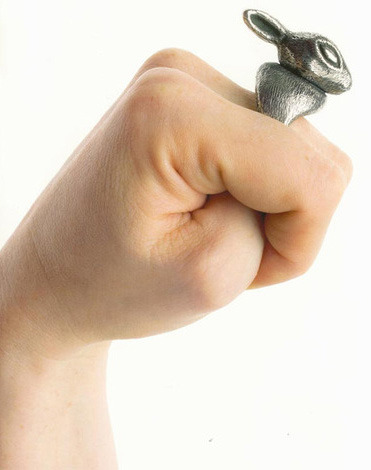from Calia Anderson:
Authenticity in the Age of Mechanical Reproduction
Is authenticity a viable option in the age of mechanical reproduction? According to Walter Benjamin’s declaration in “Illuminations” that (to paraphrase) “asking for the “Authentic” print makes no sense given that from a photographic negative one can make any number of prints”, I have a number of arguments I would like to put forth.
First of all, through work in a darkroom, any number of authentic (or original) prints are easily manageable given the direct manipulation of the photographer or developer on the developing process. Moreover, in the age of digital media and programs such as Photoshop, it is even more possible to have any number of varied “authentic” pieces each with the same starting point. There may therefore be no one authentic print, put any number of them. This would be adverse to what Benjamin is claiming in that he believes each print would be mechanically reproduced to be exactly the same. However, that being said, the negative without manipulation would rightly then be put forth as the “original” as it is the picture PRE manipulation during the development process.
Secondly, I would argue that any photograph is not just a snapshot in time that any camera can capture. In this sense a photograph is not simply a mechanical reproduction. The camera still requires a person behind it. And that person has an eye and a feeling and an ability and desire to capture a particular thing at a particular time. Even if that person is negligent of all of their own particular wants and needs they still must decide camera angle, lighting, aperture, what to focus on and what to leave out etc. Therefore, the negative of that image has still been manipulated into being. There is no such thing as a camera taking a picture. However, the camera (and the film) is the medium; and as Marshal McLuhan would argue, “the medium is the message”. It is the nature of the medium that allows us to partake in the particular format of information it is purveying and that directly relates to how we access or acknowledge that information. Moreover, what we learn or encounter during the use of that medium is also due to that medium. This might also affect one’s sense of authentic as each person comes from a different place and so interprets the exact same information differently.
I would therefore conclude that the photograph still maintains a sense of the authentic in that not every photographer given the same moment in time, the same place and the same desires would choose to capture a subject in the exact same way. There may be differences in lighting, angle, focus, depth of field etc that make each photographer’s vision unique. Furthermore, once that film has been edited it becomes even more so “authentic” as that filmmaker or photographer has manipulated the information to portray a certain piece of information at exclusion of others. The photographers “eye” is every bit as important as the sculptor’s hand and the Painter’s vision in creating the authentic. Though many prints of the same negative are possible, and therefore possibly less “authentic”, there still remains the possibility to create several (ad infinitum) different versions of the same original, each authentic in their own right.
Ansel Adams is one photographer who spends a great deal of time in the post-production phase of his photography. Not only is his eye important for the actual picture taking, but manipulating the image into what he has in his mind is equally important. His images may be mass-produced and replicated around the world, but I would argue that they maintain their sense of the “authentic” by being authentically his vision, his creation and his eye. Visions from him, to us.

Ansel Adams: Leaf, Glacier Bay National Monument
Image from www.anseladams.com
from Amelia Smith:
Assignment Five: Modern Vision
Walter Benjamin argues: “To an ever greater degree the work of art reproduced becomes the work of art designed for reproducibility. From a photographic negative, for example, one can make any number of prints to ask for ‘the authentic’ print makes not sense.”
I disagree with Benjamin’s statement, I think the ‘authentic’ still has great significance even in an age of digital design and manufacture. Leonardo’s Mona Lisa is a perfect example of authentic importance. There are millions of Mona Lisa replicas and merchandise so why would seeing the original be any different? Walter Benjamin says in The Work of Art in the Age of Mechanical Reproduction “Even the most perfect reproduction of a work of art is lacking in one element: its presence in time and space, its unique existence at the place where it happens to be.” He means because of the aura that surrounds the original artwork that makes its authenticity so important to the viewers. Looking at the authentic print makes you one of the privileged and knowing this adds to the aura of that moment. Even an original photograph, before it had been Photoshopped and reproduced for the mass, has some significance even if only for the artist himself.
I think there is still a role for the ‘authentic’ in this age and I have found a way of scaling the importance of authenticity in today’s society. From Marketing, Real People, Real Choices by Solomon Charbonneau, Hughes Chitty and Marshell Stuart, I found a graph used for marketing purposes, which society has been divided into five groups and these groups are a great example of how we value authenticity differently.
Firstly there are the Innovators (2.5%) who are the ‘Trend Setters’, the discoverers and they value the authentic and originals. Then the Early Adopters (13.5%) who are quick on the up take, and value the authentic. The Early Majority (34%) are the Sheep, they follow the mass needing fit in with society. They are less worried about authenticity and more worried about appearance. The Late Majority (34%) are another large group, they catch on later after all the fuss has calmed down. They invest to fit in like the ‘Sheep’ and are not hung up on authenticity rather interested in function. Last are the Laggards (16%) who are behind the eight ball, they would have been the last people on Telecom’s 025 network. They only buy into a product when it has become a necessary part of life, such as a mobile phone. They are the least worried about authenticity, just function and purpose.
This system of loosely grouping society shows that authenticity is not lost in this digital design and manufacture age, it has just become more specific to certain areas. It has just changed its place on peoples list of priorities.
from Henry Roberts:
Modern Vision
In the modern day and age if asked to give someone an authentic print of a photograph any one person would think along the same lines as Walter Benjamin when he says “from a photographic negative…one can make any number of prints; to ask for the authentic print makes no sense” from his 1936 book The Work of Art in the Age of Mechanical Reproduction”. In reality this question is double barreled, you can answer this figuratively or literally.
If one wanted to answer this literally there would be no real authentic as any number of copies can be made and the original lost or never created at all, this applies to all things that are made unless they are one off designs, and even then they can be copied exactly without the knowledge of the creator at all.
However, if one wanted to answer this figuratively the answer is simple and is something which I agree with also. To ask someone for the ‘authentic’ would be to ask for the photo, piece of art or design which the person who took or made it considered to be the true version made by their own hands. Without diluting it with foreign influences or people. To add to my last statement what better way to show ‘authenticity’ in this day and age than showing the physical embodiment of this statement. The Adidas Original shoes, there have been many replicas made but these are the only one true authentic.





